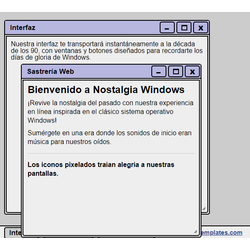
The 80´s
The 1980s marked a turning point in the history of technology. It was an era of unprecedented innovation that brought personal computers (PCs) to the home and workplace, forever transforming the way people worked, learned, and communicated.
The Birth of Personal Computers
Although computers had been around for decades, it was in the 1980s that their use became popular thanks to advances in miniaturization, cost reduction, and accessibility. Companies like IBM, Apple, Commodore, and Atari led the technological revolution by launching machines designed for everyday consumers, not just for large corporations or universities.
-
Apple and the Mac: In 1984, Apple launched the Macintosh, the first personal computer with a user-friendly graphical interface and a mouse, revolutionizing the way users interacted with machines. Its advertising campaign, based on George Orwell's novel 1984, became a cultural icon.
-
IBM PC: Introduced in 1981, the IBM PC became a standard for both the business and home markets. Its open architecture allowed other manufacturers to create compatible systems, giving rise to the term "PC" as a synonym for personal computer.
-
Commodore 64: Known for its affordability and popularity among young people, this computer was one of the best-selling of the decade. Its ability to run video games made it especially attractive for homes.
-
Atari ST and Amiga: These computers stood out for their graphic and sound power, being the favorites of video game enthusiasts and digital musicians.
Major Technological Advances
- Faster Processors: Microprocessors such as the Intel 8086 and the Motorola 68000 made more powerful and compact PCs possible.
- Mass Storage: Hard drives and floppy disks progressively replaced punch cards, facilitating the storage and transfer of data.
- Graphical Interface: The development of operating systems such as MS-DOS and later Windows brought with it a greater usability.
- Networking:Although rudimentary, the first local area networks (LAN) and limited Internet access began to emerge.
The Computer at Home
In the 1980s, having a computer at home ceased to be an unattainable luxury and became a reality for many families. PCs were primarily used for:
- Education: Educational games and learning programs began to proliferate.
- Work: Word processing applications such as WordPerfect and spreadsheets such as Lotus 1-2-3 increased productivity.
- Entertainment: Video games such as Pac-Man and Tetris ushered in a new form of digital entertainment.
Cultural Impact
Computers in the 1980s not only changed technology, but also influenced popular culture. Movies such as Tron (1982) and WarGames (1983) captured the public's imagination by showcasing the potential of machines. In addition, user communities and specialized magazines emerged that fostered a culture of learning and technological innovation.
The Legacy of the 1980s
The 1980s laid the groundwork for the technological explosion of the following decades. Personal computers democratized access to technology, boosted the digital economy, and transformed society as a whole. Today, in an interconnected world, it is impossible not to recognize the impact of that era on the development of modern computers.
The dream of the visionaries of the 1980s was to bring a computer to every home, and their legacy lives on in every device we use today.

